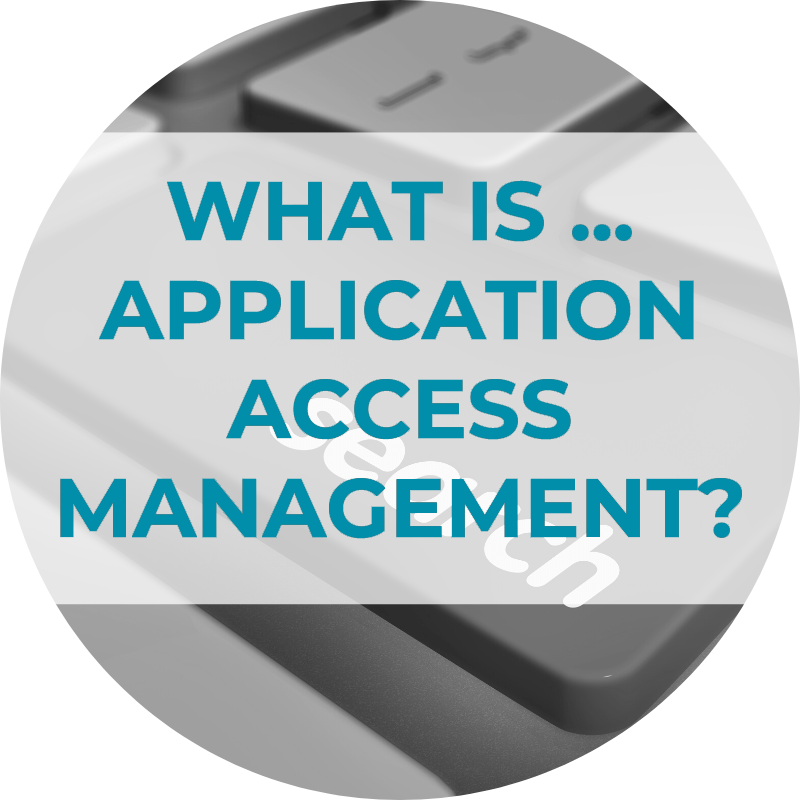What is Application Access Management?
A Guide to Application Access Management
In a world that is shifting toward using a variety of cloud-based services, and embracing remote work, maintaining network security is increasingly difficult. In particular, organizations need a solution that allows for secure access to a variety of different applications, from a variety of different devices and locations. Application access management addresses this challenge, by allowing organizations to manage user access to individual applications and other digital resources.
Access management as part of identity and access management (IAM)
Access management is usually provided as part of an identity and access management (IAM) solution. Whereas access management itself provides authentication tools to grant or deny user access, IAM solutions also include methods for managing user identity. These methods often include multifactor authentication, and single sign-on (SSO) support.
IAM provides secure enterprise application access to employees and third parties alike, using a streamlined authentication and authorization service.
Authentication vs. authorization
Authentication
Authentication is the process through which a user’s identity is verified, based on one or more authentication factors. There are a number of different authentication factors that may be used:
- Something the user knows, such as a password.
- The user’s location.
- Something biologically unique to the user, such as a fingerprint.
- Something the user owns, like a mobile device.
Authorization
Authorization is the process through which a user’s access to a particular application or resource is determined, using permissions. If the user has the required permissions, the access management solution will grant access to the app in question. If the user does not have the required permissions, access will be denied.
Multi-factor authentication
Many application access management solutions support multi-factor authentication (MFA). This provides protection against credential theft, by requiring a user to authenticate using more than one proof of identity, for highly secure application access. For example, the user may need to enter a password, and then approve a notification on their phone using biometrics, such as a fingerprint or facial recognition.
Single sign-on (SSO)
SSO capabilities allow a user to access all of their applications and other resources using one set of login credentials. Most access management solutions support the standard protocols for SSO identity management – SAML, Oauth, and OpenID Connect.
A familiar example of SSO is how you can log into many different web applications using your existing Google or Facebook account credentials.
SSO has two main benefits. First, it makes life easier for the user, as they do not need to create and remember many different passwords for individual applications. Second, it prevents unsafe password storage practices that may present a security risk – such as reusing passwords, and/or storing them in a plain text file, or on paper.
Access management as part of a zero trust network access (ZTNA) solution
For organizations wishing to implement zero trust network access (ZTNA) to protect their network, application access management is a fundamental ingredient. This is because zero trust architecture is based on the premise that user identity is verified at the application level, using least privilege access and granular policies. Users are only granted access to the apps they have permissions to access, and user identity must be reverified with every access request. This is exactly what an application access management solution does.
A comprehensive zero trust solution will also integrate other tools for network security – such as threat intelligence, data security, and more.
Learn about access management and zero trust.
Application access management benefits
Secure access to cloud services
Data protection is a major issue for organizations, due to possible consequences of a data breach, including customer loss, various penalties, and the cost involved in downtime and/or data recovery.
An application access solution will provide secure access to cloud-based resources, which in turn protects the network from infiltration, keeping sensitive data safe. These resources may include cloud applications on Azure, AWS, or Google Cloud, as well as other web-based apps like Microsoft Office 365.
Streamlined user experience
When an access management solution is implemented, the user authentication process becomes far easier. Users in an organization are given an identity, and they only need to remember the one set of credentials associated with that identity. No matter whether they are trying to access an internal resource, or an external application, the same identity can be used.
Safe 3rd-party access
If an organization wishes to grant application access to certain 3rd-party users, such as a customer or vendor, they can do it easily through the application access management solution.
Centralized management
Application management tools provide access controls that allow organizations to group users and assign roles and permissions as needed, all in one place. Organizations can easily add multiple users and give them permissions to access the resources they need.
Easy implementation
As application access management tools are usually 100% cloud-based, they are easy for a business to deploy, and can scale to support as many users as are required.
